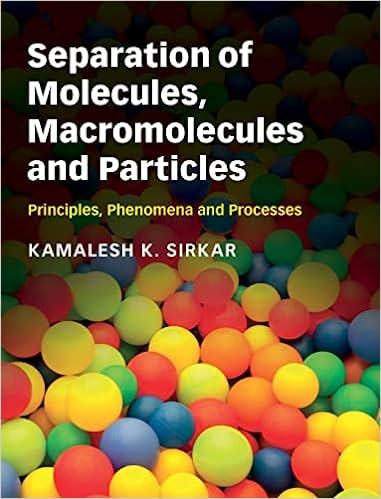Answered step by step
Verified Expert Solution
Question
1 Approved Answer
Please fill out results under observation down below: Specific Heat is the amount of heat required to raise the temperature of a unit mass by
Please fill out results under observation down below:
Specific Heat is the amount of heat required to raise the temperature of a unit mass by one degree. It can be expressed in terms of caloriesgmC or Joules kg K Water has a relatively high specific heat of calgmC Metals usually have a low specific heat, for example lead has a specific heat of calgmC
A calorimeter is an instrument for determining the amount of heat evolved, transferred or absorbed In our case it will consist of a closed insulated vessel with a thermometer.
The amount heat Q transferred to or from a mass m with a specific heat c and a temperature change of T is: Q mcT or Heat Transferred mass x specific heat x temperature change
In this experiment we will measure the specific heat of several metals by warming them to a know temperature and adding them to a known quantity of water in a calorimeter and measuring the resulting rise in temperature.
Heat is transferred between the heated metal and the water, such that the heat loss by the metal is equal to the heat gained by the water. We can also express this as:
Mass metalxSpecific heat of metal xInitial temp of metal Final temp of metal
Mass of waterxSpecific heat of waterxInitial temp of water Final temp of water
Note: Final Temp of Water Final Temp of Metal.
Using this we can determine the specific heat of an unknown metal. This can also be used to determine the atomic weight of a pure metal by using the law of Dulong and Petit, where :
Specific heat of metalatomic weight calmole degree.
Procedure:
Step : Obtain metal sample in test tube. First add a test tube to the Lab. Select the test tube and add gm of Iron Shot Fe Add a thermometer to the test tube so that you can record the initial temperature of the Fe
Step : Prepare hot water bath and add test tube with metal. Obtain a ml beaker. Add ml of water at room temperature to the beaker. Place test tube within beaker select the test tube and position it over the beaker, and combine from the Arrange Menu Combine option Now heat the combined beaker test tube arrangement by heating with a bunsen burner until the Fe shot reaches the boiling point of water C
Step : Place heated metal in calorimeter with water at room temp. Add Calorimeter to Lab select Equipment menuCalorimeter Add ml of water at room temp C to calorimeter select calorimeter and press water toolbar button x or use water dialog box Remove test tube from beaker by selecting beaker and using the Arrange MenuRemove menu Pour the heated Iron into the calorimeter and close the calorimeter close calorimeter by selecting calorimeter and pressing the thermometer tool bar button. This will add both a thermometer and a cork top to calorimeter Record the final temperature of the water.
Step : Repeat steps with other metals, recording final temperature and compare.
Observations:
Initial temperature of metal:
Final temperature of metal:
Initial temperature of water from calorimeter:
Final water temperature from calorimeter:
Estimate of specific heat for metal:
use calgmC for water
Estimate the atomic weight of metal:
Step by Step Solution
There are 3 Steps involved in it
Step: 1

Get Instant Access to Expert-Tailored Solutions
See step-by-step solutions with expert insights and AI powered tools for academic success
Step: 2

Step: 3

Ace Your Homework with AI
Get the answers you need in no time with our AI-driven, step-by-step assistance
Get Started


